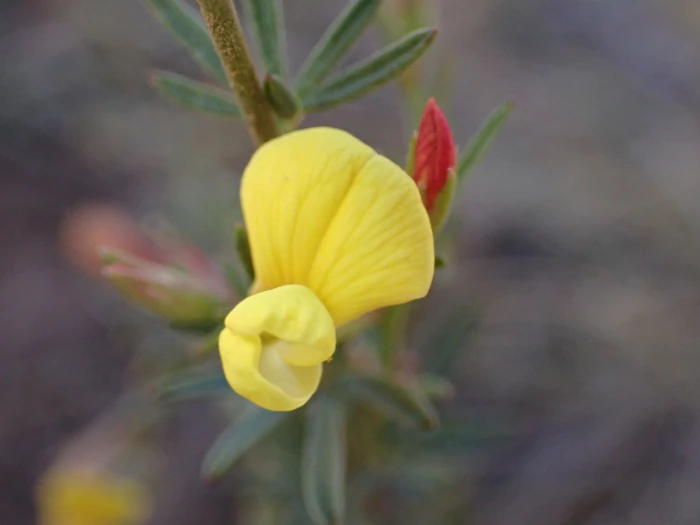Wright’s Deervetch
(Acmispon wrightii)
Wright’s Deervetch (Acmispon wrightii)
/
/

© Jared Shorma
CC BY 4.0
Image By:
© Jared Shorma
Recorded By:
Copyright:
CC BY 4.0
Copyright Notice:
Photo by: © Jared Shorma | License Type: CC BY 4.0 | License URL: http://creativecommons.org/licenses/by/4.0/ | Uploader: blazeclaw | Publisher: iNaturalist |

























Estimated Native Range
Climate Requirements
| • Precipitation | 17" - 20" |
| • High Temp. | 78°F - 91°F |
| • Low Temp. | 12°F - 29°F |
Summary
Acmispon wrightii, commonly known as Wright’s Deervetch or Wright’s Lotus, is a perennial herb that is native to arid and semi-arid regions, including desert slopes, mesas, and chaparral environments in the Southwestern United States and Northern Mexico. It typically grows at a moderate rate to a height of 0.5-1.5 feet (0.15-0.45 meters) and a width of 0.5-1 feet (0.15-0.3 meters). This plant features pinnate leaves and bears showy yellow pea-like flowers during the spring and summer months, which can attract pollinators such as bees.
Wright’s Deervetch is valued for its drought tolerance and ability to thrive in challenging environments, making it suitable for xeriscaping and naturalistic plantings. It is often used in restoration projects to stabilize soils and as a component of wildflower mixes. Its low water requirement and preference for full sun make it an easy-care choice for gardeners in arid regions. While it is not commonly affected by diseases, it can be susceptible to root rot if overwatered or planted in poorly draining soils. It is not known for being invasive and does not typically present problems when grown outside its native range.CC BY-SA 4.0
Wright’s Deervetch is valued for its drought tolerance and ability to thrive in challenging environments, making it suitable for xeriscaping and naturalistic plantings. It is often used in restoration projects to stabilize soils and as a component of wildflower mixes. Its low water requirement and preference for full sun make it an easy-care choice for gardeners in arid regions. While it is not commonly affected by diseases, it can be susceptible to root rot if overwatered or planted in poorly draining soils. It is not known for being invasive and does not typically present problems when grown outside its native range.CC BY-SA 4.0
Plant Description
- Plant Type: Herb
- Height: 0.5-1.5 feet
- Width: 0.5-1 feet
- Growth Rate: Moderate
- Flower Color: Yellow
- Flowering Season: Spring, Summer
- Leaf Retention: Deciduous
Growth Requirements
- Sun: Full Sun
- Water: Low
- Drainage: Fast
Common Uses
Drought Tolerant, Low Maintenance
Natural Habitat
Arid and semi-arid regions, including desert slopes, mesas, and chaparral environments
Other Names
Common Names: Wright’s Lotus
Scientific Names: Acmispon wrightii, Anisolotus wrightii, Hosackia wrightii, Lotus wrightii, Ottleya wrightii
GBIF Accepted Name: Acmispon wrightii